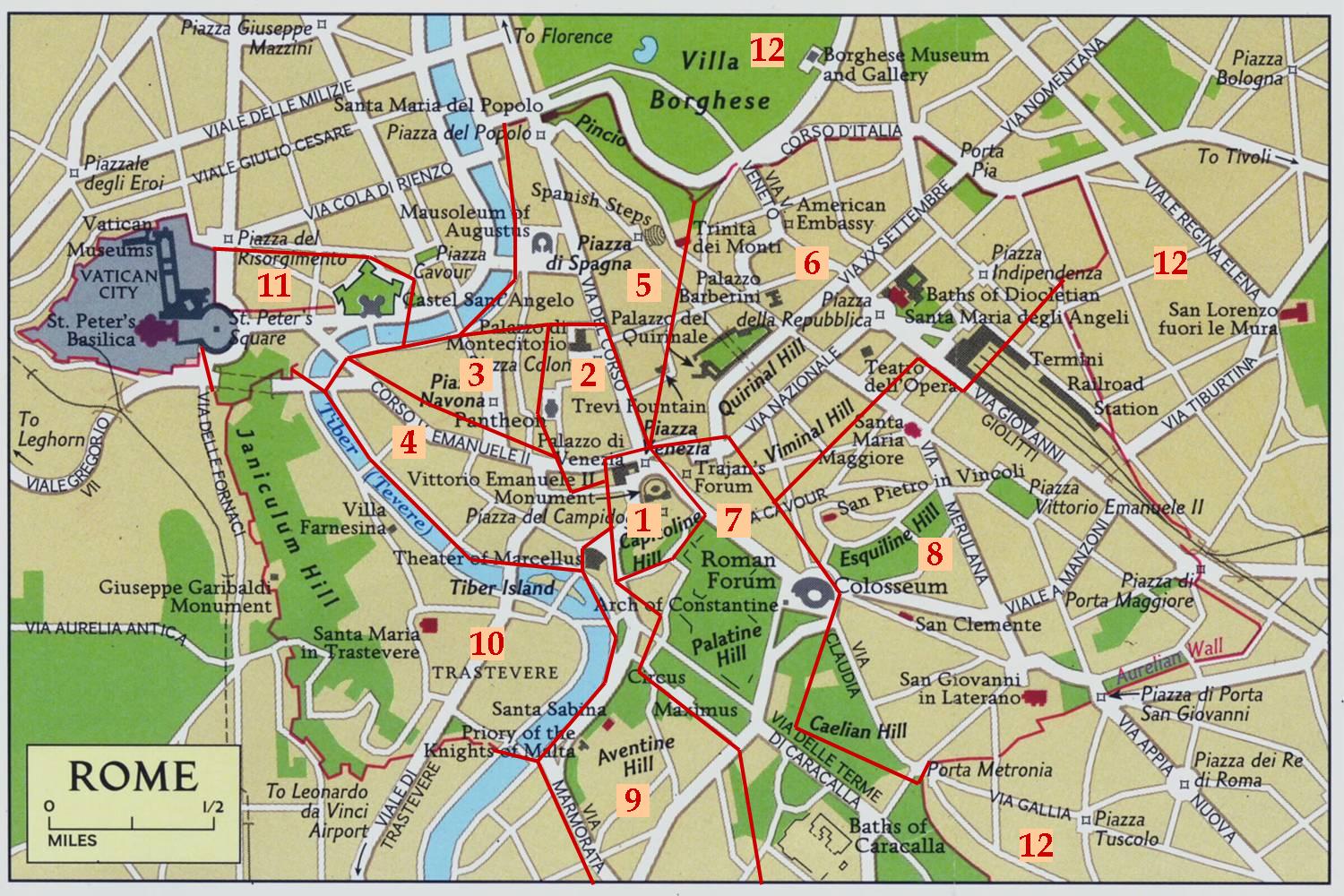The Twelve Not Built in a Day Walking Tours

As shown on the map above, Not Built In A Day divides the city into twelve separate walking tours, beginning at the center of the town (the Piazza Venezia) and then moving clockwise around the city within the ancient walls starting with the Tiber bend area. The titles of the tours (listed below) reflect the predominant architectural character of the area being covered (ancient, medieval, Baroque, and so forth); however, the titles are not meant to imply that sites from other eras along the route are excluded.
- Tour 1: Overview of the City: The Capitoline Hill
- Tour 2: Old Rome I: The Campus Martius (Northeast)
- Tour 3: Old Rome II: The Campus Martius (Northwest)
- Tour 4: Old Rome III: The Campus Martius (South)
- Tour 5: Baroque Rome I: Around the Corso
- Tour 6: Baroque Rome II: The Quirinal and Viminal Hills
- Tour 7: Ancient Rome: The Forum, the Colosseum, and Beyond
- Tour 8: Medieval Rome: The Esquiline and Caelian Hills
- Tour 9: Off the Beaten Track I: The Aventine Hill
- Tour 10: Off the Beaten Track II: Trastevere and the Janiculum Hill
- Tour 11: Catholic Rome: St. Peter's, The Vatican, and the Borgo
- Tour 12: Greater Rome: Outside the Walls
Each tour begins with a short introduction describing the area of the city to be explored. The illustrative etchings accompanying the introductions are by Giuseppe Vasi, who in the mid-1700s produced some 200 views of Rome that included almost all of the city's famous buildings, monuments, fountains, and piazzas.
